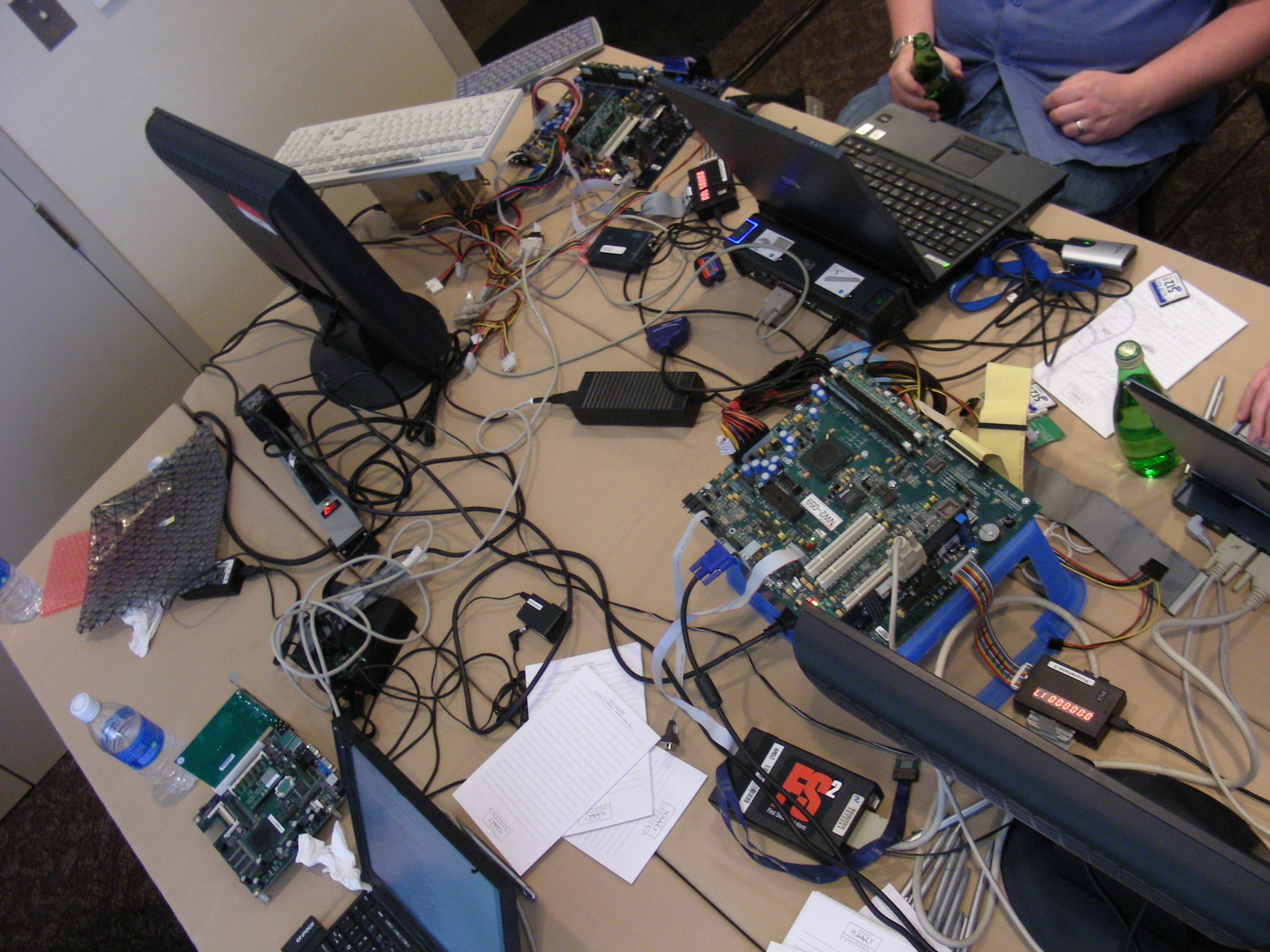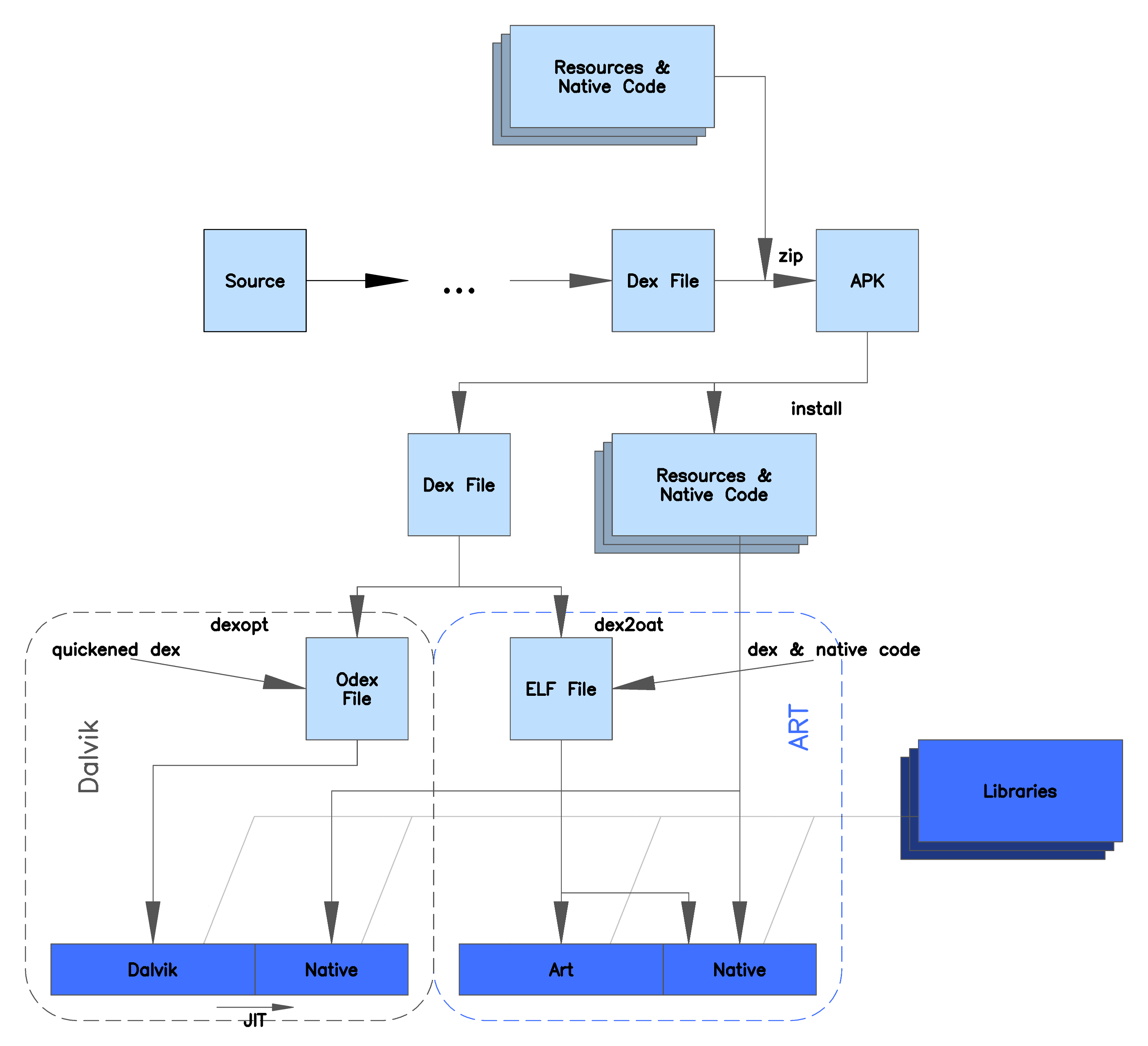|
Ghidra
Ghidra (pronounced gee-druh; ) is a free and open source reverse engineering tool developed by the National Security Agency (NSA) of the United States. The binaries were released at RSA Conference in March 2019; the sources were published one month later on GitHub. Ghidra is seen by many security researchers as a competitor to IDA Pro. The software is written in Java using the Swing framework for the GUI. The decompiler component is written in C++, and is therefore usable in a stand-alone form. Ghidra plugins can be developed in Java or in Python (provided via Jython). History Ghidra's existence was originally revealed to the public via WikiLeaks in March 2017, but the software itself remained unavailable until its declassification and official release two years later. In June 2019, Coreboot began to use Ghidra for its reverse engineering efforts on firmware-specific problems following the open source release of the Ghidra software suite. Ghidra can be used as a debugger ... [...More Info...] [...Related Items...] OR: [Wikipedia] [Google] [Baidu] |
Coreboot
coreboot, formerly known as LinuxBIOS, is a software project aimed at replacing proprietary firmware (BIOS or UEFI) found in most computers with a lightweight firmware designed to perform only the minimum number of tasks necessary to load and run a modern 32-bit or 64-bit operating system. Since coreboot initializes the bare hardware, it must be ported to every chipset and motherboard that it supports. As a result, coreboot is available only for a limited number of hardware platforms and motherboard models. One of the coreboot variants is Libreboot, a software distribution fully free of proprietary blobs, aimed at end users. History The coreboot project began in the winter of 1999 in the Advanced Computing Laboratory at Los Alamos National Laboratory (LANL), with the goal of creating a BIOS that would start fast and handle errors intelligently. It is licensed under the terms of the GNU General Public License version 2 (GPLv2). Main contributors include LANL, SiS, AMD, ... [...More Info...] [...Related Items...] OR: [Wikipedia] [Google] [Baidu] |
National Security Agency
The National Security Agency (NSA) is a national-level intelligence agency of the United States Department of Defense, under the authority of the Director of National Intelligence (DNI). The NSA is responsible for global monitoring, collection, and processing of information and data for foreign and domestic intelligence and counterintelligence purposes, specializing in a discipline known as signals intelligence (SIGINT). The NSA is also tasked with the Information assurance, protection of U.S. communications networks and information systems. The NSA relies on a variety of measures to accomplish its mission, the majority of which are clandestine operations, clandestine. The existence of the NSA was not revealed until 1975. The NSA has roughly 32,000 employees. Originating as a unit to decipher coded communications in World War II, it was officially formed as the NSA by President Harry S. Truman in 1952. Between then and the end of the Cold War, it became the largest of the U.S. ... [...More Info...] [...Related Items...] OR: [Wikipedia] [Google] [Baidu] |
Decompiler
A decompiler is a computer program that translates an executable file to a high-level source file which can be recompiled successfully. It does therefore the opposite of a typical compiler, which translates a high-level language to a low-level language. Decompilers are usually unable to perfectly reconstruct the original source code, thus frequently will produce obfuscated code. Nonetheless, decompilers remain an important tool in the reverse engineering of computer software. Introduction The term ''decompiler'' is most commonly applied to a program which translates executable programs (the output from a compiler) into source code in a (relatively) high level language which, when compiled, will produce an executable whose behavior is the same as the original executable program. By comparison, a disassembler translates an executable program into assembly language (and an assembler could be used for assembling it back into an executable program). Decompilation is the act of usin ... [...More Info...] [...Related Items...] OR: [Wikipedia] [Google] [Baidu] |
Jython
Jython is an implementation of the Python programming language designed to run on the Java platform. The implementation was formerly known as JPython until 1999. Overview Jython programs can import and use any Java class. Except for some standard modules, Jython programs use Java classes instead of Python modules. Jython includes almost all of the modules in the standard Python programming language distribution, lacking only some of the modules implemented originally in C. For example, a user interface in Jython could be written with Swing, AWT or SWT. Jython compiles Python source code to Java bytecode (an intermediate language) either on demand or statically. History Jython was initially created in late 1997 to replace C with Java for performance-intensive code accessed by Python programs, moving to SourceForge in October 2000. The Python Software Foundation awarded a grant in January 2005. Jython 2.5 was released in June 2009. Status and roadmap The most recent rele ... [...More Info...] [...Related Items...] OR: [Wikipedia] [Google] [Baidu] |
IDA Pro
The Interactive Disassembler (IDA) is a disassembler for computer software which generates assembly language source code from machine-executable code. It supports a variety of executable formats for different processors and operating systems. It also can be used as a debugger for Windows PE, Mac OS X Mach-O, and Linux ELF executables. A decompiler plug-in for programs compiled with a C/ compiler is available at extra cost. The latest full version of IDA Pro is commercial, while a less capable version is available for download free of charge (version 8.1 ). IDA performs automatic code analysis, using cross-references between code sections, knowledge of parameters of API calls, and other information. However, the nature of disassembly precludes total accuracy, and a great deal of human intervention is necessarily required; IDA has interactive functionality to aid in improving the disassembly. A typical IDA user will begin with an automatically generated disassemb ... [...More Info...] [...Related Items...] OR: [Wikipedia] [Google] [Baidu] |
ARM Architecture
ARM (stylised in lowercase as arm, formerly an acronym for Advanced RISC Machines and originally Acorn RISC Machine) is a family of reduced instruction set computer (RISC) instruction set architectures for computer processors, configured for various environments. Arm Ltd. develops the architectures and licenses them to other companies, who design their own products that implement one or more of those architectures, including system on a chip (SoC) and system on module (SOM) designs, that incorporate different components such as memory, interfaces, and radios. It also designs cores that implement these instruction set architectures and licenses these designs to many companies that incorporate those core designs into their own products. There have been several generations of the ARM design. The original ARM1 used a 32-bit internal structure but had a 26-bit address space that limited it to 64 MB of main memory. This limitation was removed in the ARMv3 series, w ... [...More Info...] [...Related Items...] OR: [Wikipedia] [Google] [Baidu] |
PowerPC
PowerPC (with the backronym Performance Optimization With Enhanced RISC – Performance Computing, sometimes abbreviated as PPC) is a reduced instruction set computer (RISC) instruction set architecture (ISA) created by the 1991 Apple– IBM–Motorola alliance, known as AIM. PowerPC, as an evolving instruction set, has been named Power ISA since 2006, while the old name lives on as a trademark for some implementations of Power Architecture–based processors. PowerPC was the cornerstone of AIM's PReP and Common Hardware Reference Platform (CHRP) initiatives in the 1990s. Originally intended for personal computers, the architecture is well known for being used by Apple's Power Macintosh, PowerBook, iMac, iBook, eMac, Mac Mini, and Xserve lines from 1994 until 2005, when Apple migrated to Intel's x86. It has since become a niche in personal computers, but remains popular for embedded and high-performance processors. Its use in 7th generation of video game consol ... [...More Info...] [...Related Items...] OR: [Wikipedia] [Google] [Baidu] |
MIPS Architecture
MIPS (Microprocessor without Interlocked Pipelined Stages) is a family of reduced instruction set computer (RISC) instruction set architectures (ISA)Price, Charles (September 1995). ''MIPS IV Instruction Set'' (Revision 3.2), MIPS Technologies, Inc. developed by MIPS Computer Systems, now MIPS Technologies, based in the United States. There are multiple versions of MIPS: including MIPS I, II, III, IV, and V; as well as five releases of MIPS32/64 (for 32- and 64-bit implementations, respectively). The early MIPS architectures were 32-bit; 64-bit versions were developed later. As of April 2017, the current version of MIPS is MIPS32/64 Release 6. MIPS32/64 primarily differs from MIPS I–V by defining the privileged kernel mode System Control Coprocessor in addition to the user mode architecture. The MIPS architecture has several optional extensions. MIPS-3D which is a simple set of floating-point SIMD instructions dedicated to common 3D tasks, MDMX (MaDMaX) which is a more ext ... [...More Info...] [...Related Items...] OR: [Wikipedia] [Google] [Baidu] |
Java Virtual Machine
A Java virtual machine (JVM) is a virtual machine that enables a computer to run Java programs as well as programs written in other languages that are also compiled to Java bytecode. The JVM is detailed by a specification that formally describes what is required in a JVM implementation. Having a specification ensures interoperability of Java programs across different implementations so that program authors using the Java Development Kit (JDK) need not worry about idiosyncrasies of the underlying hardware platform. The JVM reference implementation is developed by the OpenJDK project as open source code and includes a JIT compiler called HotSpot. The commercially supported Java releases available from Oracle are based on the OpenJDK runtime. Eclipse OpenJ9 is another open source JVM for OpenJDK. JVM specification The Java virtual machine is an abstract (virtual) computer defined by a specification. It is a part of java runtime environment. The garbage-collection algorit ... [...More Info...] [...Related Items...] OR: [Wikipedia] [Google] [Baidu] |
Motorola 68000
The Motorola 68000 (sometimes shortened to Motorola 68k or m68k and usually pronounced "sixty-eight-thousand") is a 16/32-bit complex instruction set computer (CISC) microprocessor, introduced in 1979 by Motorola Semiconductor Products Sector. The design implements a 32-bit instruction set, with 32-bit registers and a 16-bit internal data bus. The address bus is 24 bits and does not use memory segmentation, which made it easier to program for. Internally, it uses a 16-bit data arithmetic logic unit (ALU) and two more 16-bit ALUs used mostly for addresses, and has a 16-bit external data bus. For this reason, Motorola termed it a 16/32-bit processor. As one of the first widely available processors with a 32-bit instruction set, and running at relatively high speeds for the era, the 68k was a popular design through the 1980s. It was widely used in a new generation of personal computers with graphical user interfaces, including the Macintosh 128K, Amiga, Atari ST, an ... [...More Info...] [...Related Items...] OR: [Wikipedia] [Google] [Baidu] |
IA-32
IA-32 (short for "Intel Architecture, 32-bit", commonly called i386) is the 32-bit version of the x86 instruction set architecture, designed by Intel and first implemented in the 80386 microprocessor in 1985. IA-32 is the first incarnation of x86 that supports 32-bit computing; as a result, the "IA-32" term may be used as a metonym to refer to all x86 versions that support 32-bit computing. Within various programming language directives, IA-32 is still sometimes referred to as the "i386" architecture. In some other contexts, certain iterations of the IA-32 ISA are sometimes labelled i486, i586 and i686, referring to the instruction supersets offered by the 80486, the P5 and the P6 microarchitectures respectively. These updates offered numerous additions alongside the base IA-32 set including floating-point capabilities and the MMX extensions. Intel was historically the largest manufacturer of IA-32 processors, with the second biggest supplier having been AMD. During th ... [...More Info...] [...Related Items...] OR: [Wikipedia] [Google] [Baidu] |
Dalvik (software)
Dalvik is a discontinued process virtual machine (VM) in the Android operating system that executes applications written for Android. (Dalvik bytecode format is still used as a distribution format, but no longer at runtime in newer Android versions.) Dalvik was an integral part of the Android software stack in the (now unsupported) Android versions 4.4 "KitKat" and earlier, which were commonly used on mobile devices such as mobile phones and tablet computers, and more in some devices such as smart TVs and wearables. Dalvik is open-source software, originally written by Dan Bornstein, who named it after the fishing village of Dalvík in Eyjafjörður, Iceland. Programs for Android are commonly written in Java and compiled to bytecode for the Java Virtual Machine, which is then translated to Dalvik bytecode and stored in .dex (''Dalvik EXecutable'') and .odex (''Optimized Dalvik EXecutable'') files; related terms ''odex'' and ''de-odex'' are associated with respective bytecode ... [...More Info...] [...Related Items...] OR: [Wikipedia] [Google] [Baidu] |






